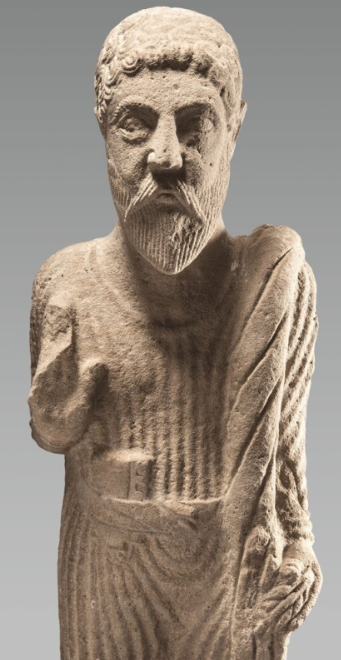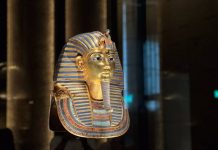Islamabad – Iran has once again captured the spotlight of global heritage tourism with the discovery of a remarkable Elymaean statue in Kalgah Zarin, southwest Iran. Unearthed by the Iranian Oil Company alongside a hoard of Seleucid and Parthian coins, this extraordinary find highlights the depth of Iran’s cultural treasures and strengthens its position as one of the world’s premier destinations for history and archaeology enthusiasts.
Now proudly displayed at the National Museum of Iran, the limestone statue offers a captivating glimpse into the rich artistry of the Elymaean civilization, which thrived in the rugged Zagros Mountains between the 2nd century BCE and the 3rd century CE.
A Window Into Ancient Iran
The statue depicts a worshipper in a posture of reverence, his right arm raised with an open palm, a timeless gesture of devotion seen across Parthian-era Mesopotamia. Intricate details—his tightly curled hair, stylized beard, and finely carved attire—reveal the sophistication of Elymaean sculptors. Scholars believe the statue originated from a workshop renowned for producing masterpieces such as those of Bard-e Neshandeh and Masjed Soleyman.
Visitors to the National Museum will marvel at his attire: a knee-length tunic, draped sash, and ceremonial belt, complete with what experts interpret as a ritual key. This small yet symbolic detail illustrates the Elymaeans’ spiritual and cultural identity.
Iran: A Living Museum of Civilizations
The statue not only enriches Iran’s museums but also enhances its global tourism profile. Every year, thousands of international visitors are drawn to Iran’s ancient cities, archaeological wonders, and vibrant living culture. The Elymaean find adds another layer to Iran’s mosaic of civilizations—joining the legacy of the Elamites, Persians, Parthians, and Sasanians.
The discovery underscores Iran’s unique role as a cultural crossroads, where Greek, Semitic, and local traditions merged into distinctive artistic expressions. Such treasures invite travelers to go beyond the well-known sites of Persepolis and Isfahan, and explore hidden gems in Khuzestan and the Zagros Mountains.
A Gateway for Tourism Growth
As Iran invests in heritage tourism and cultural promotion, discoveries like this statue promise to attract scholars, history lovers, and curious travelers alike. With modern infrastructure improving and cultural diplomacy gaining momentum, Iran is positioning itself as a world-class destination for those eager to experience the cradle of civilization.
From the treasures of Persepolis to the Elymaean worshipper now showcased in Tehran, Iran continues to invite the world to witness its timeless story.
BY: The Times Union







